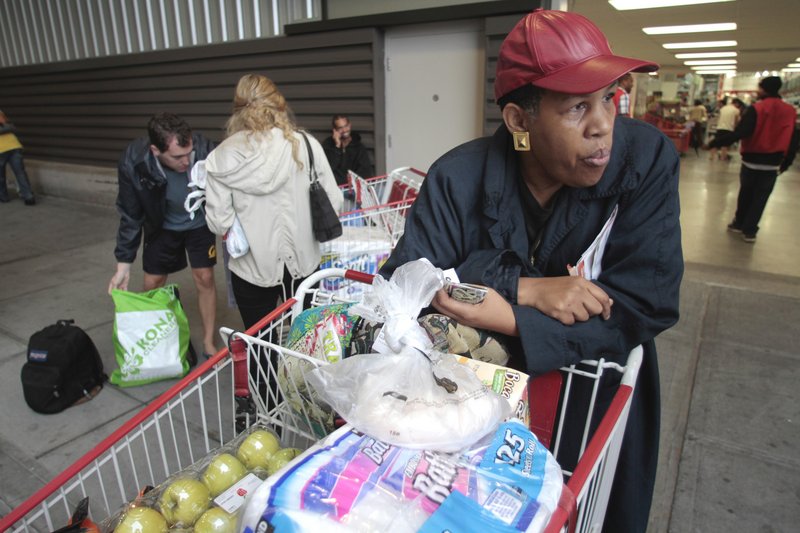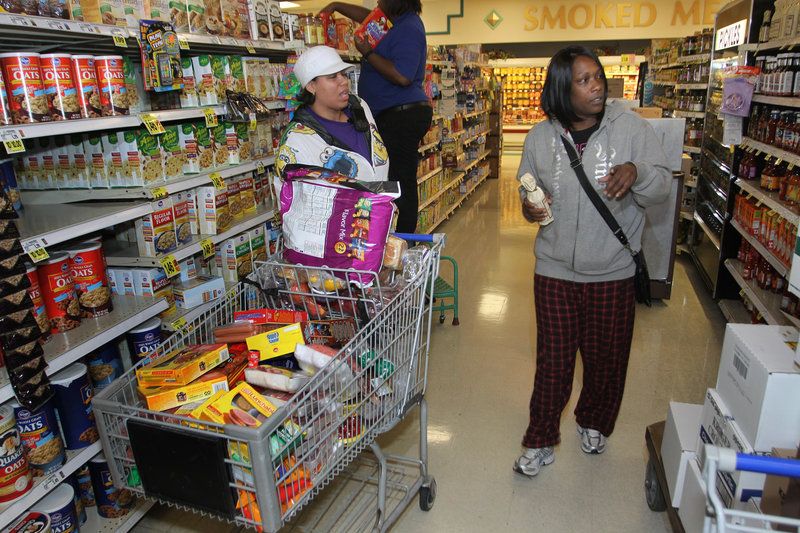FREDERICKSBURG, Va. – Once a month, just after midnight, the beeping checkout scanners at a Walmart just off Interstate 95 come alive in a chorus of financial desperation.
Here and at grocery stores across the country, the chimes come just after food stamps and other monthly government benefits drop into the accounts of shoppers who have been rationing things like milk, ground beef and toilet paper and can finally stock up again.
Shoppers mill around the store after 11 p.m., killing time until their accounts are replenished. When midnight strikes, they rush for the checkout counter.
“The kids are sleeping, so we go do what we’ve gotta do. Money is tight,” Martin Young said as he and his wife pushed two carts piled high with ground beef, toilet paper and other items.
The couple said they need food-stamp benefits, which are electronically deposited onto debit cards, because his job as a restaurant server doesn’t quite cover expenses for their five children.
“We try to get here between 10:30 and 11 because we know we’ve got a lot of stuff to get. That way by 12 o’clock we’re at the line cashing out,” he said.
More than a year after the technical end of the Great Recession, millions of Americans still have a hard time stretching their dollars until the first of the month, or even the next payday. One in seven Americans lives in poverty, and more than 41 million are on food stamps, a record. Last year the figure was about 35 million.
As a result, there are more scenes like the one last week at a 24-hour Kroger in Cincinnati. As the final hours of September ticked down, about five dozen cars were in the parking lot. It’s much slower on normal weeknights.
“This here is emergency bread,” said Malinda Patterson, 36, who has been without a full-time job since the recession began and had started shopping 20 minutes before midnight. That’s when $435 in food stamps kicked in to help feed her six children.
Stores have always noted swings in spending around paydays — a drop-off in buying in the days before shoppers receive paychecks or government subsidies, followed by a spurt of spending once the money is available. It’s known as the paycheck cycle.
The recession and its aftermath have taken the trend to an extreme. Tight credit is a factor, too. When cash runs out, many can no longer fall back on credit cards to buy what they need.
“This is the new normal,” said Richard Hastings, macro and consumer strategist with Global Hunter Securities. “This is going to be like this for many years to come.”
In Cincinnati, Patterson said she had learned how to budget. She said she hopes the midnight shopping ends soon.
“It’s going to be getting colder,” Patterson said. “Hopefully, it won’t be like this much longer.”
Send questions/comments to the editors.




Success. Please wait for the page to reload. If the page does not reload within 5 seconds, please refresh the page.
Enter your email and password to access comments.
Hi, to comment on stories you must . This profile is in addition to your subscription and website login.
Already have a commenting profile? .
Invalid username/password.
Please check your email to confirm and complete your registration.
Only subscribers are eligible to post comments. Please subscribe or login first for digital access. Here’s why.
Use the form below to reset your password. When you've submitted your account email, we will send an email with a reset code.